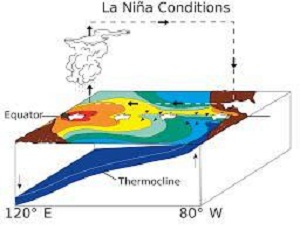 The El Niño Southern Oscillation (ENSO) cycle continued its gradual decline in June, with the return of normal conditions in the equatorial Pacific Ocean, following an end to the high sea surface temperatures recorded since the second quarter of last year.
The El Niño Southern Oscillation (ENSO) cycle continued its gradual decline in June, with the return of normal conditions in the equatorial Pacific Ocean, following an end to the high sea surface temperatures recorded since the second quarter of last year.
In the case of Cuba, the influence of this complex weather phenomenon, which affects sea temperature and air pressure, saw record temperatures in 2015, the warmest year since 1951. In addition, the dry season (November 2015-April 2016) saw above average rainfall, totalling 414.7mm nationally, representing 124% of the historic average.
It is worth mentioning that the larger extent of this accumulated precipitation fell in the period from November, 2015 – January, 2016, as February and March saw rainfall below expectations. Fortunately, these latter two months did not see severe thunderstorms or significant coastal flooding, common effects of a strong ENSO cycle.
As reflected in the Bulletin of Climate Surveillance for June, published by the Climate Center of the Cuban Institute of Meteorology, most forecasts now suggest the beginning of the La Niña event (the cool phase of the ENSO cycle) from September.
As noted previously, the presence of the La Niña phenomenon tends to result in increased cyclone activity in the tropical Atlantic basin. This is particularly possible in the months of August – October.
(Granma)